Liturgy and the early Catholic missionaries to New Zealand (1)
“We Worship God Better than in the Finest Churches”
This article was first published in the Auckland Diocese Liturgy magazine. It is used with permission.
The topic of the early Missionaries in New Zealand and the liturgy is worthy of serious study. The ideas presented in this article are based on the translations of the letters which have recently been made available online at www.mariststudies.org. The title chosen for the article is a phrase used by Fr Antoine Garin SM in his description of a missionary trip in the Bay of Islands.
When the meal [on the marae] has been finished, the bell announces the time for prayer, we worship God better than in the finest churches. Prayer is followed by a short instruction and the singing of some canticle or hymn about the main truths of religion.
The first Catholic missionaries to New Zealand were religious priests and brothers accustomed to a routine of liturgical prayer in Latin – the Mass and the Office – and of devotional prayer in their native French. An unusually detailed description of their prayer for a day is given by Br Pierre-Marie Pérénon writing from the ship taking him to New Zealand to the General of the Marist Brothers, Br François Rivat:
Dear Brother Director, you would certainly be edified if I told you how we celebrated the feast of the Purification. We did nothing out of the ordinary but you will find it very interesting when you consider we are in mid-ocean and among Protestants who have no wish to join in our exercises of piety. The day of the feast, then, rising, prayer and meditation were as usual. As we thought we wouldn’t be having any Mass because of the movement of the vessel, we had Holy Communion at 7 o’clock. At 10 o’clock, the sea having become somewhat calmer, we celebrated Mass. It was Mary, without a doubt, who obtained this favour from her divine Son. At half past one we said Vespers and Compline. At 6 o’clock we chanted the litanies of the most holy Virgin, then there was a short sermon, after which we publicly renewed our vows, priests and brothers. The three laymen who had not yet taken vows renewed their baptismal promises. During the ceremony we chanted the psalm “Conserva me Domine, etc” and finished with a canticle in honour of Mary. At 9 o’clock we said the Rosary and finished the day with evening prayer. Every Saturday we sing the litanies of the Queen of Heaven and Earth to the tune used at Fourvière, so that we imagine ourselves on that holy hill.
The Feast of the Presentation of the Lord, also called ‘Candlemas’ and the ‘Purification of the Virgin’ on 2 February is a significant feast with a Marian theme. As passengers on board ship they had abundant spare time. There is a hint that they may have been ostentatious in their exercises of piety to impress the other passengers and the crew, though Br Pierre-Marie claims that they “did nothing out of the ordinary.” Note the pre-Vatican II practice of advancing the prayers of the Office. They celebrated evening and night prayer at 1:30pm. They are evidently steeped in Marian devotion, particularly devotions associated with the city of Lyons. The shrine at Fourvière has a special place in the hearts of Marists, being associated with their origins as a congregation.
A year later, Br Pierre-Marie writes again to Br François telling him this time of his impression of the Māori and a little about what they are teaching them:
All the natives smoke pipes, men, women, and children. They go barefooted and bareheaded, but they cover their bodies. They have lost many of their barbarous habits since they have been mixing with Europeans. They do a lot of travelling and have an aversion for hard work. Their memories are good and they learn by heart everything they want to. It is very edifying to see them make the sign of the cross or to hear them respond to the prayers and sing the hymns.
Almost all of them know how to read and write. They love their books. The place where we live in New Zealand is called the Bay of Islands and the town is called Kororareka.
The Missionaries comment frequently on the Māori ability to quickly learn prayers, hymns and catechism. They have the memory skills of people raised in an oral culture, yet there is a new widespread literacy and a desire for reading materials. Protestant missionaries were teaching reading, but it appears to have spread well beyond the mission schools. Māori were teaching Māori to read in Te Reo.
The teaching of prayers, hymns, and catechism was the catechesis being provided by the missionaries. They were teaching the Māori to pray, but the prayers were vernacular devotional prayers rather than Latin liturgical prayer because they were catechumens, as yet unbaptized. Fr Antoine Garin explains the thinking behind this missiological approach:
Fortunately Bishop Pompallier visited a little on all sides and began by promising them priests, then they started to say the Catholic prayers, and on our arrival we had the consolation of seeing chiefs coming from all sides to ask for priests, bells, and books, so that now in New Zealand the Catholics are more numerous, at least the future Catholics because all those of whom I speak want to become so, but one does not press oneself to give them baptism for fear they will do, as unfortunately several here have done who, after having received baptism, left and scandalized others by their bad conduct; which is the result of being unable, for lack of priests, to follow up on them, and keep them in their first frame of mind.
Bishop Pompallier and the other missionaries considered as Catholics, those who ‘said the Catholic prayers,’ which inclined them to inflate the numbers who had been influenced by their evangelisation. The Missionaries who themselves prayed the prayers of the liturgy in Latin, and engaged in devotional prayer in French, began their evangelisation by teaching prayers and hymns in Te Reo.
In 1840 Br Michel Colombon describes to St Marcellin Champagnat a typical missionary visit:
In the three or four days we were with them they learned their prayers and other truths of the Faith. They all asked for priests and have built houses and chapels of reeds for them. Fr Viard is leaving today to start a new mission at Tauranga, the largest of the tribes we visited. In a few days, another is going to start at Kaipara, two days walk from the Bay of Islands.
The ‘chapels of reeds’ built by such tribes were a place for mass to be celebrated in Latin on the rare occasion that a priest visited. Their more frequent function was as a place for the ‘Catholic prayers’ but these do not seem to have been restricted by place.
Even when the Eucharist was being celebrated the congregation was more likely to be praying in Te Reo. Fr Chouvet, whilst complaining to Fr Colin about the poor relationship between him and Bishop Pompallier, mentioned that the Bishop said the Mass for the natives, and was unwilling for me to assist him, even having the natives’ prayers during the holy sacrifice led by a native. This gives us a glimpse of a liturgy being celebrated by the bishop, while the congregation are led in devotional prayers. The Māori attended the mass but in the days before dialogue liturgy were not expected to verbally engage with it and, being catechumens, they would not have received communion. Being present, and praying along with the mass was the expected behaviour.
Br Claude-Marie describes the dynamic to Br Francois:
I see these fine New Zealanders coming in their canoes to assist at the divine mysteries of our holy Faith, saying their prayers and singing the hymns the Fathers have composed for them in their own language!
1 Fr Antoine Garin to Fr Jean-Claude Colin, Bay of Islands, 22 & 26 July 1842
2 Br Pierre-Marie (Pierre) Pérénon to Br François (Gabriel) Rivat, Cape of Good Hope, 25 February 1841, translated by Br Edward Clisby FMS.
3 Br Pierre-Marie (Pierre) Pérénon to Br François (Gabriel) Rivat, Kororareka, Bay of Islands, 20 May 1842, translated by Br Edward Clisby FMS.
4 Fr Antoine Garin to Fr Jean-Claude Colin, Kororareka, 22 September, 1841, translated by Virginia Spencer.
5 Br Michel (Antoine) Colombon to Fr Marcellin Champagnat, Bay of Islands, 17 May 1840, translated by Br Edward Clisby FMS.
6 Fr Auguste-Joseph Chouvet to Fr Jean-Claude Colin, Bay of Islands, 29 June 1845, translated by Br Edward Clisby FMS.
7 Br Claude-Marie (Jean-Claude) Bertrand to Br Francois (Gabriel) Rivat, Hokianga, 26 Jul 1842, translated by Br Edward Clisby FMS.
(To be continued)
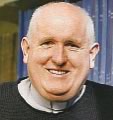
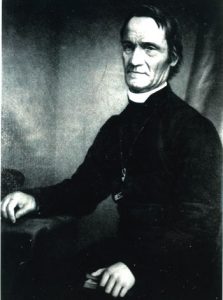
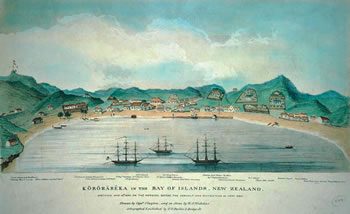
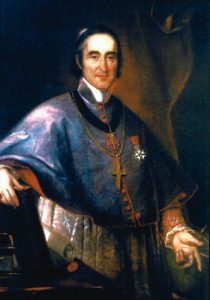
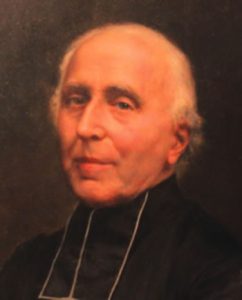
 Entries(RSS)
Entries(RSS)